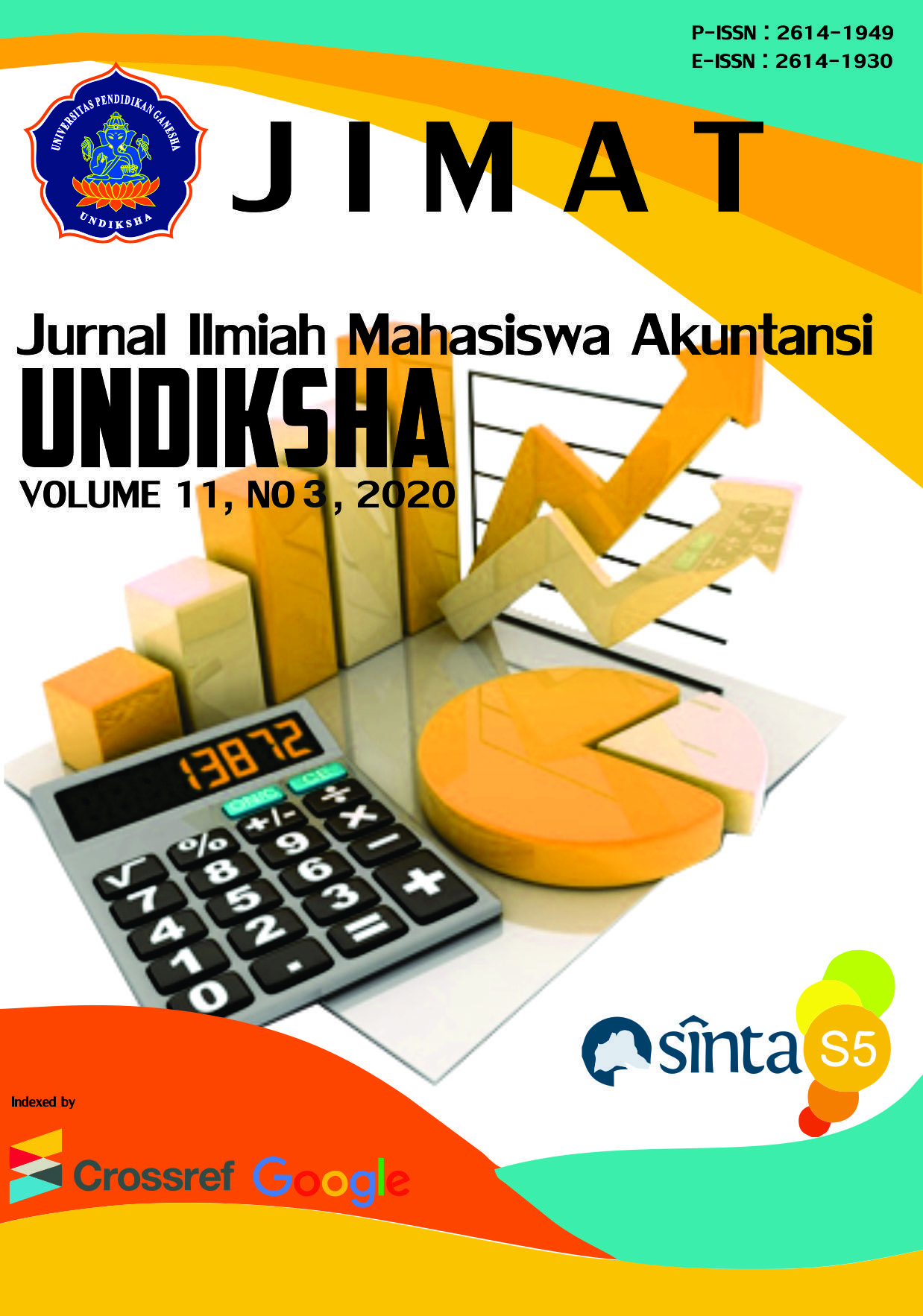Analisis Kinerja Koperasi Serba Usaha (Ksu) “Tri Dwi Eka” Menggunakan Metode Balanced Scorecard
DOI:
https://doi.org/10.23887/jimat.v11i3.30737Keywords:
Financial Perspective, Customer Perspective, Internal Business Process Perspective, Learning and Growth PerspectiveAbstract
The purpose of this research is to analyze the performance of Tri Dwi Eka KSU using the Balanced Scorecard Method. This research is a descriptive quantitative research. Based on the results of the analysis, it shows that the company's health uses the Balanced Scorecard Method. Based on the theory and provisions of the KUKM regulation no. 20 / Per / M.KUKM / XI / 2008, namely from a financial perspective starting from the ratio of own capital, efficiency, liquidity, asset profitability, capital profitability itself can be categorized as healthy in accordance with the stipulated provisions. Assessment from a customer perspective as measured by customer acquisition and customer rent can be categorized as healthy because the greater the customer perspective, the better the health level of the company's performance. Assessment from the internal business perspective process as measured by SCE, standard time divided by the time of completion can be categorized as healthy as well. Assessment of company performance is seen from the perspective of learning and growth, which from the level of employee productivity and employee retention can be categorized as healthy
References
Alimudin. 2007. Analisis Pencapaian Strategi Pendidikan Menggunakan Balance Scorecard Hal 194-205. Jakarta: Jurnal Pendidikan Ekonomi & Bisnis Universitas Narotama, Indonesia.
Ardiyanti, E. R., 2010. Pengukuran Kinerja Dengan Balance Scorecard Studi Kasus Pada Pabrik Gula Madukismo. Yogyakarta: Program Studi Akuntansi Jurusan Akuntansi Fakultas Ekonomi Universitas Sanata Darma.
Dodangh, Javad, Mojahed, M., & Nasehifar. 2010. Rangking Of Strategic Plans In Balance Scorecard By Using Electric Method. International Journal of Innovation, Management and Technology, 1(3), 269-274.
Jovanovic, J. (2009). Balance Scorecard Model Evaluation: The Case of AD Barska Plovidba. Montenegoro. Faculty of Mechanical Engineering.
Kaplan, Robert, S., & Norton. 2000. Balance Scorecard: Menerapkan Strategi Menjadi Aksi. Jakarta: Erlangga.
Mahsun, M. 2009. Akuntansi Sektor Publik. Yogyakarta: BPFE UGM.
Malmi. 2001. Balance Scorecard In Finnish Companies: A Research Note. Management Accounting Researce, Vol, 12, No. 2
Mulyadi. 2007. Balance Scorecard. Jakarta: Selemba Empat.
........... 2005. Akuntansi Biaya, Edisi Kelima. Yogyakarta: UPP AMP YKPN
Pateman, A. 2008. Lingking Srategy to Operation: Six Stage To Execution. Business Performance Management Magazine.
Peraturan Menteri Koperasi dan Usaha Kecil dan Menengah No. 20/per/M.KUKM/XI/2008
Prawirosentono, S. 1999. Kebijakan Kinerja Karyawan. Yogyakarta: BPFE.
Srimindarti, Ceacilia. 2004. Balance Scorecard sebagai Alternatif Untuk Mengukur Kinerja. Jakarta: Jurnal Pendidikan Ekonomi & Bisnis.
Strohhecker. 2007. Does A Balanced Scorecard Management Cockpit Increase Strategy Implementation Performance? System Dynamics Society Conference.
Sugiyono, 2013. Metode Penelitian Bisnis. Cetakan ke-15. Alfabet. Bandung.
Ulum, I. M. 2006. Audit Sektor Publik Suatu Pengantar. Jakarta: Bumi Aksara.
Widodo, I., 2011. Analisis Kinerja Perusahaan Dengan Menggunakan Pendekatan Balance Scorecard (Studi Kasus Pada Perusahaan Mebel PT. Jansen Indonesia). Semarang: Fakultas Ekonomi Universitas Diponegoro.
Widyastuti, I. T., Indriana, Umar, A., & Bawono, A. 2017. Analisis Kinerja Perusahaan dengan Metode Balance Scorecard (Studi Kasus Pada PT. XYZ Bergerak di Bidang Telekomunikasi). Jakarta: Jurnal Administrasi dan Kesekretarisan, 3(1), 124-137.
Yuwono, S. 2002. Petunujuk Praktis Penyusunan Balance Scorecard: Menuju Organisasi Yang Berfokus Pada Strategi. Jakarta: PT. Gramedia Pustaka Utama.


